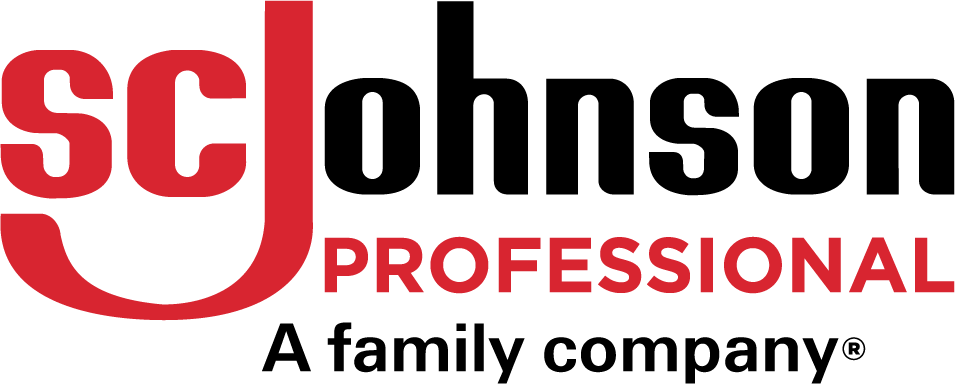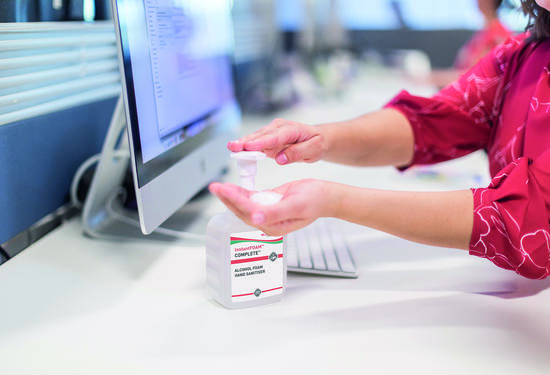Improving food safety whilst looking after employees
Every year in Europe, more than 23 million people fall ill from eating contaminated food, resulting in 5000 deaths[1]. Employees’ hand hygiene is key to reducing the risk of cross-contamination in every step of the chain, from production to plate. This means keeping a high standard of cleanliness that is strictly enforced. Cross-contamination and skin dermatitis outbreaks can disrupt production, risk business reputation, and ultimately, cause serious illness.
Foodborne pathogens of concern
It is important to be familiar with pathogens that may cause harm, if proper hand hygiene protocol is not followed. The below can be identified amongst the main causes of concern for the food industry[2]:
- Campylobacter[3] - campylobacteriosis is transmitted mainly by ingestion of undercooked contaminated food, such as poultry and sometimes pork. In addition, cross-contamination by handling and washing contaminated food can lead to the spread of campylobacter onto hands, work surfaces, clothing and cooking equipment.
- Listeria monocytogenes3 - listeriosis is a rare but serious notifiable disease transmitted to humans through food.
- Salmonella enterica3 - salmonellosis is a disease caused by Salmonella bacteria. Salmonella is present in the intestines of animals and can contaminate the environment via their faeces. Salmonella is resistant to cold but killed by heat. Raw food is the most frequently contaminated; meat (especially poultry), eggs, and raw or undercooked egg preparations.
- Escherichia Coli (E.coli)3 - a family of bacteria, some of which are naturally present in the human gut without causing harm, while others can cause serious food-borne illnesses (FBD). These infections, while usually not serious, can sometimes develop into haemolytic uraemic syndrome, which is rare but dangerous for children, especially those under five years of age.
Reduce the risk of cross-contamination and recalls
In order to encourage hand hygiene best practice, a proper hand hygiene infrastructure must be in place. This should include protective creams, biocidal hand wash, sanitisers and moisturising creams developed specifically for the food industry, to help promote good skin health before, during and after working hours. Hygienically sealed cartridges can also reduce the spread of micro-organisms by preventing the ingress of air into the cartridge during use.
However, providing effective, high-quality products is not enough. Food safety workers are more inclined to use these products if they are pleasant and if workers themselves have had proper training and access to educational tools.
The importance of best practice
Following best practice to help promote good skin health and hand hygiene is one of the keys to successful hygiene compliance, especially in the food processing industry. This best practice should include educating on the range of products, as well as why and when to use them.
Why use protection creams?
Using protection creams can make skin quicker and easier to clean with milder hand cleaners. They help the skin to retain natural lipids and moisture in whilst working, help improve comfort when wearing gloves, help improve grip when using hand-held equipment and protect skin against exposure to workplace substances and environmental conditions (i.e. ultraviolet (UV) rays or exposure to water-based or oily contaminants).
Why use appropriate hand cleaners?
Proper hand cleaning using the appropriate product helps remove germs and prevents physical contaminants from becoming ingrained in the skin. Using hand cleaners that are too heavy for what is required can be harsh on the skin and using hand cleaners that are too light for what is required can lead to over-scrubbing and not fully clean skin.
Why use hand sanitisers?
Hand sanitisers should be used when hands are physically clean but need to be hygienically clean. They can be used without water at the point of use and help keep the skin in good condition, even after frequent use. Sanitisers can also provide broad-spectrum antimicrobial activity against many common germs.
Why use restore creams?
They support the skin’s natural barrier, make the skin feel smooth and supple and help to maintain its condition, keeping it strong and healthy and avoiding dryness.
Protect, cleanse, sanitise and restore
SC Johnson Professional’s Stokoderm® skin protection creams are suitable for water-based contaminants, multiple contaminant types or specific work environments. We also offer an extensive range of hand and body cleaners to match the type of contamination encountered. These products include washroom foam soaps and shower products, OxyBAC®[4] antimicrobial soaps, Estesol® light duty industrial hand cleaners and shower products, Solopol® solvent-free heavy duty hand cleaners, InstantFOAM™ Complete[5]alcohol-based foam hand sanitiser for use without water and Stokolan® after-work skin moisturising, conditioning and restoration creams.
Get in touch today for a Free Site Audit & Trial
[1] The burden of foodborne diseases in the WHO European region, World Health Organization 2017.
[2] Food Standards Agency https://www.food.gov.uk/safety-hygiene/campylobacter#how-campylobacter-is-spread
[3] Ministry of Agriculture and Fisheries General, Financial Secretariat, social and logistic affairs department Oct. 2008
[4] Use biocides safely. Always read the label and product information before use.
[5] Use biocides safely. Always read the label and product information before use.


